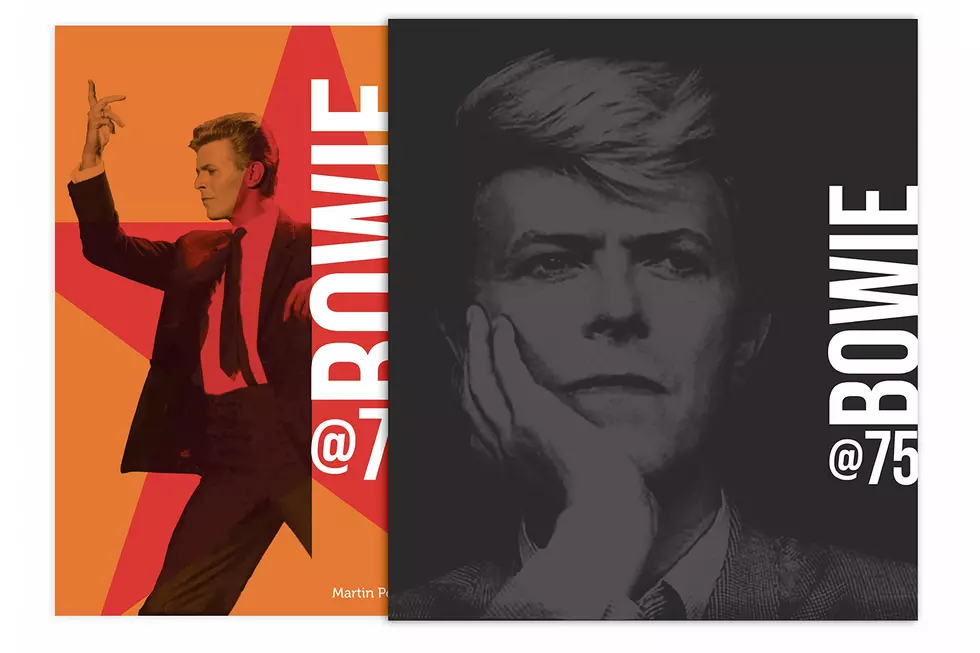
Read a ‘Scary Monsters’ Excerpt From New David Bowie Book
Writers and fans alike have tried to get a grasp on David Bowie, an artist who was always in search of his next big thing, since his 2016 death.
He'd be 75 today, and a new book, Bowie at 75, fittingly aims to unpack Bowie's "extraordinary life through the lens of 75 significant career achievements and life events."
Penned by Martin Popoff, the book invites readers to closely examine how Bowie's work was shaped through the decades. The below excerpt from Bowie at 75 discusses the creation of his 14th album, 1980's Scary Monsters (and Super Creeps).
It isn’t all jagged mood swings with Bowie. Often it’s an evolution, with Lodger, in retrospect, sounding like the blueprint (or, more harshly, the demo) for where Bowie would go with Scary Monsters (and Super Creeps) — basically challenging, post-punk songs of conventional length and accessible with some (but not too much) effort to fairly avant-garde and noisy (thank Robert Fripp).
But the brief was to do something fairly commercial, after a run of records for the cult. Bowie’s main effort toward this was his request to plan more diligently and then sit with the songs after the backing tracks were done, before applying the vocals and, as importantly, penning the final lyrics. In this spirit, the band recorded at the Power Station in New York, with Fripp quipping that "anyone who goes to New York takes his work seriously." Two and a half weeks there were followed by a two-month break before reconvening at Tony Visconti’s Good Earth Studios in London for vocals plus overdubs.
Yet again, with respect to band personnel, the main change from last time is a switch-out of guitarists, with Adrian Belew replaced by Robert Fripp, who really makes his presence known on six of 10 tracks, including this writer’s favorite Fripp solo of all time, on "Teenage Wildlife." Otherwise, Carlos Alomar, George Murray and Dennis Davis are back, with Brian Eno gone, although his influence is still felt. Roy Bittan happened to be in the same studio recording with Bruce Springsteen and makes a return visit, playing on three songs. Significantly, this would mark the end of a long run with Murray and Davis. David would die of cancer on April 6, 2016, at age 66, not three months after Bowie passed at 69.
Scary Monsters, issued Sept. 12, 1980, would reach No. 1 in the U.K. and No. 12 in the U.S., driven by moderate hits in "Fashion" and "Ashes to Ashes," the latter receiving expensive video treatment with plush sets, including a padded cell. Bowie goes full Pierrot for this surreal pre-MTV clip, representing a tie to his mime past as well as the album cover. The song is also notable for the line "We know Major Tom's a junkie," with the track artfully referring to and updating Bowie's old hit "Space Oddity."
Elsewhere, at the abrasive end there's "Scream Like a Baby," "It's No Game" (in two parts), and the heavy title track with its M.C. Escher–like synth ping and Fripp squealing away like a dinosaur stuck in primordial mud. But much of the album has good pop bones despite eccentric window-dressing, namely gnarly, distorted, atonal Fripp pushing and shoving the songs off the charts (Bowie yells "Shut up!" at him twice but it doesn't stick).
Little did we know Scary Monsters would mark the end of an era, instigated, arguably, back at Station to Station. Also arguably, it's the best of that run, rich with a settled maturity gained from intense collaborations with fellow sonic assassins like Iggy Pop, Brian Eno, Adrian Belew, Robert Fripp and Tony Visconti, not to mention his stable but also creatively ready-and-willing core band of Carlos Alomar, George Murray and Dennis Davis. In essence, Scary Monsters sounds like a victory lap, a vigorous thrust and parry at the likes of Gary Numan (see "Teenage Wildlife"), Bowie making the statement that it takes wisdom, history and leadership to execute difficult music properly.

